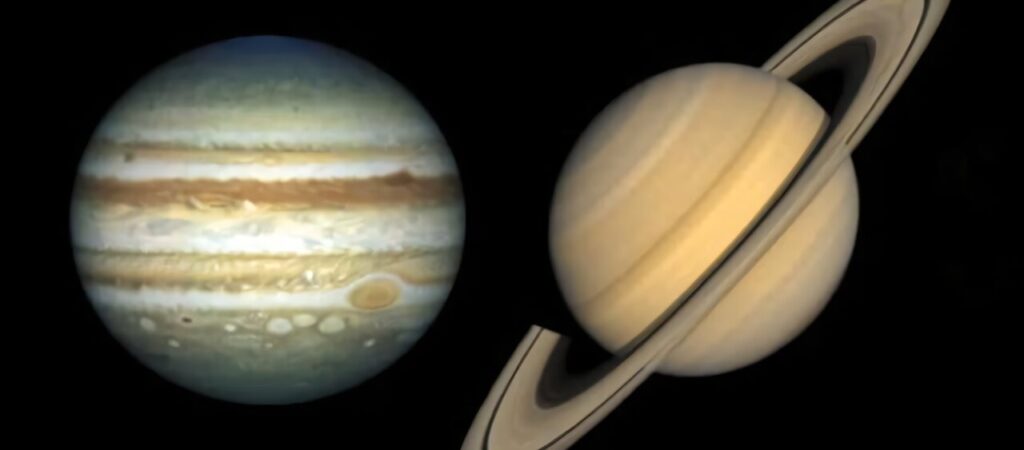
The James Webb Space Telescope (JWST) is poised to revolutionize our understanding of exoplanets, particularly those resembling Jupiter and Saturn. A new study suggests that JWST’s Mid-Infrared Instrument (MIRI) imaging could directly detect these gas giants, which are typically cooler and located further from their stars. This breakthrough could significantly expand our knowledge of planetary systems beyond our own.
Detecting exoplanets has traditionally relied on indirect methods like the transit and radial velocity techniques. These methods, while effective, are limited by observational biases. Direct imaging, considered the gold standard, offers a more comprehensive view but has been challenging to achieve. The JWST, with its advanced capabilities, was designed to overcome these hurdles, focusing on the Birth of Stars and Protoplanetary Systems as one of its core science themes.
Advancements in Exoplanet Imaging
The JWST has already demonstrated its prowess by using NIRCam and MIRI coronagraphy to image young sub-Jupiter-mass exoplanets and mature gas giants. However, detecting planets like Jupiter and Saturn, which are cooler and more distant, has remained elusive. Recent research led by Rachel Bowens-Rubin, a postdoctoral researcher at the University of Michigan, proposes a novel approach using JWST’s MIRI imaging without coronagraphy.
The study, titled “NIRCam Yells at Cloud: JWST MIRI Imaging Can Directly Detect Exoplanets of the Same Temperature, Mass, Age, and Orbital Separation as Saturn and Jupiter,” published in The Astrophysical Journal Letters, highlights the potential of MIRI’s 21 μm imaging mode. This mode could detect planets with similar characteristics to Jupiter and Saturn, addressing the under-representation of such planets in the known exoplanet population.
Understanding the Potential of MIRI Imaging
The research is part of the JWST’s “Cool Kids on the Block” program, which focuses on gas and ice giant exoplanets orbiting low-mass stars, specifically red dwarfs within 6 parsecs (19.5 light-years). The authors demonstrate that MIRI imaging can effectively detect planets with the same temperature, mass, age, and orbital separations as our solar system’s giants.
Bowens-Rubin and her team explored the impact of cloudy atmospheres on detection capabilities. They found that MIRI’s longer wavelengths offer a better contrast ratio between the planet and its star compared to NIRCam coronagraphy, particularly for systems within about 20 parsecs (65 light-years). This advantage makes MIRI imaging a superior method for detecting cold giants.
Implications for Exoplanet Research
The implications of this research are profound. If MIRI imaging can uncover more exo-Jupiters and exo-Saturns, it could reshape our understanding of planetary systems. Current data suggest that our solar system might be an outlier, but discovering more cold giants could indicate that such systems are more common than previously thought.
“If these trends hold, low-mass cold giant exoplanets may be among the most common types of exoplanets in the galaxy,” the authors write.
Previous studies, including a 2021 microlensing survey, suggested an average of 1.5 low-mass giant planets per solar system. Radial velocity surveys further indicated that planets less massive than Jupiter are more prevalent. These findings hint at a clustering of such planets near the water snowline, a region where icy bodies form.
Future Prospects and Next Steps
The success of MIRI imaging opens new avenues for direct characterization of cold giant exoplanets. Future JWST observations, combined with advancements in data-reduction techniques, could enhance the sensitivity of MIRI imaging even further. This progress paves the way for a deeper understanding of our own solar system’s place within the galaxy’s diverse planetary architectures.
As researchers continue to refine these techniques, the potential for discovering a substantial population of cold, low-mass giant exoplanets grows. Such discoveries would not only provide insights into the formation and evolution of planetary systems but also help contextualize our solar system within the broader cosmic landscape.
The findings of Bowens-Rubin and her team underscore the JWST’s capability to push the boundaries of exoplanet research, offering a glimpse into the future of astronomical exploration and the quest to understand our universe’s intricate tapestry.







